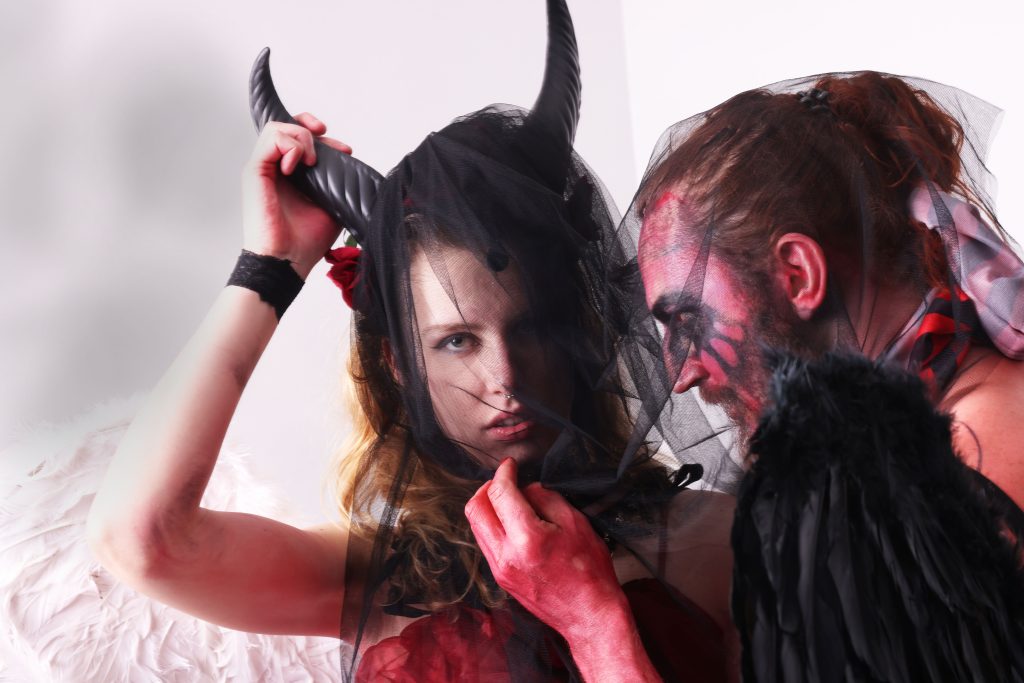
Emma and Mathias grew up in worlds where the body was something to control, where desire was a sin, and where freedom came with conditions. Strict Christian homes in the Netherlands and Sweden shaped their childhood with rules and boundaries—about right and wrong, purity and shame. But no faith is static. No truth is unchanging.
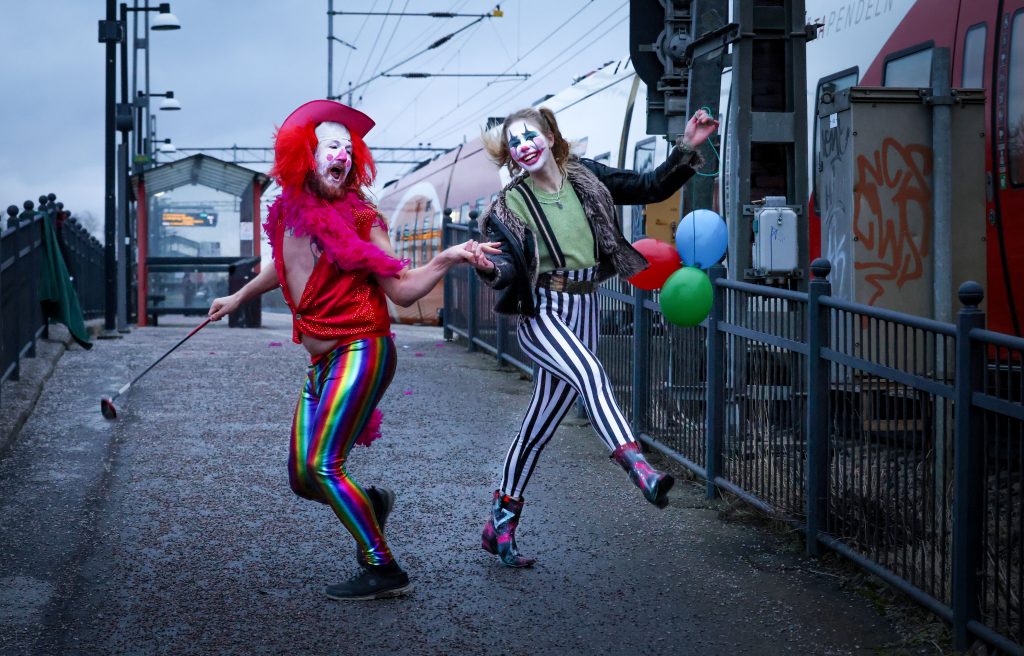
This series is a visual story of rebellion, but also of healing. Of facing the past, stripping it away, and reshaping it. For one week, my camera became a tool for exploration, for setting and breaking limits. They took on roles—clowns, happy and carefree, like children in a world without restrictions. They shared a bathtub filled with plastic ducks, an innocent toy in a scene that blurs the line between play and sensuality.
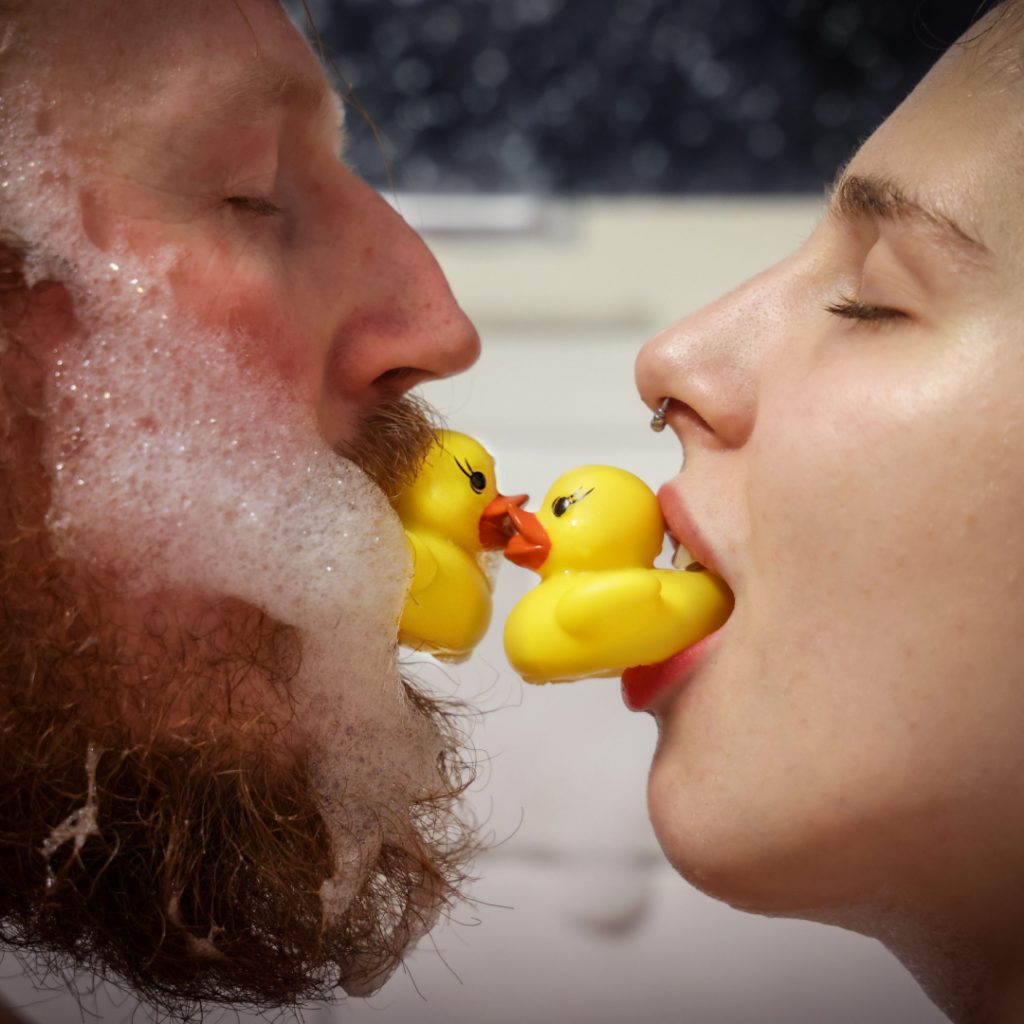
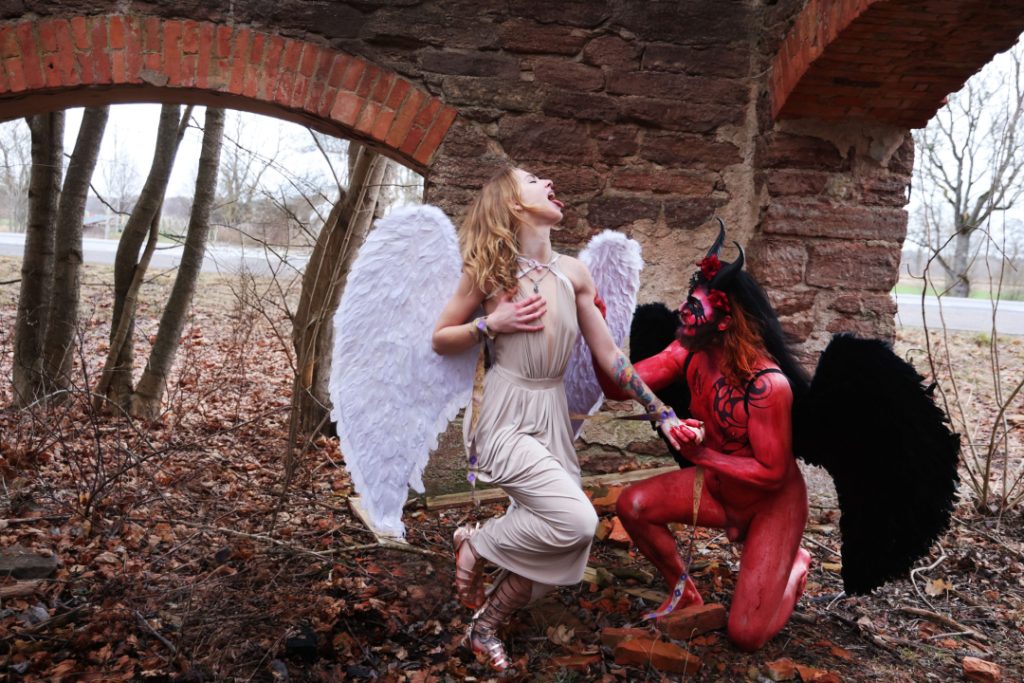
Yet the shadows of their upbringing seep through the images. In a frozen landscape, they stand with angel wings—black and white. The angel as a symbol of purity, but also of the fallen. ”For me, angel wings represent both purity and the fall from it,” Emma says. ”They symbolize a being that was once close to the divine but descended. But if we really fell from grace—why do we look so graceful now?”
For Mathias, the conflict between faith and the body runs deep. ”I still see Jesus as a reference for how to act, how to see women, how to be present,” he says. ”But at the same time, I live in conflict. I believe in God, but I also have sex before marriage. Christian morality has evolved with me, growing as I grow. Sometimes, I feel like I’m the one pushing that evolution forward.”
In one of the most intense images, a red-painted Mathias lifts Emma in the last light of sunset. His body, covered in color as if on fire, holds her in a pose that can be read as tenderness or sacrifice. The sun warms, but something else chills—a wild boar, hit by a car, lying nearby. Death and life exist in the same space.
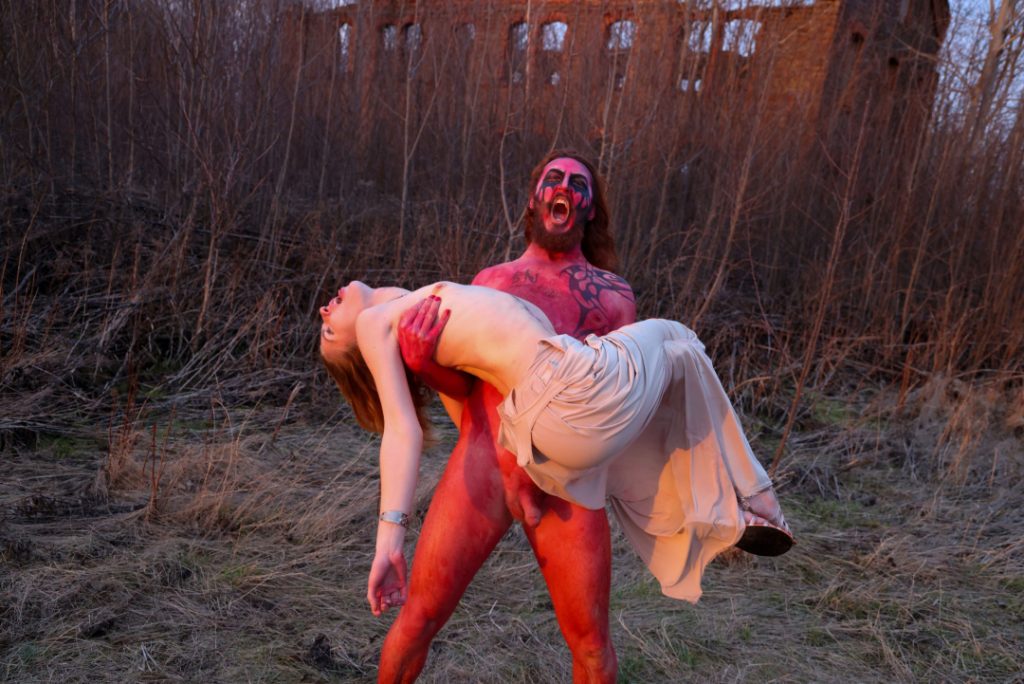
The Body as a Sacred Revolt
For Emma, one of the most powerful moments came when she was about to paint a backdrop for a photograph. She held the brush in her hand, but something felt wrong. Instead, she dipped her hands into the paint and let her skin, her movement, and her breath become the artwork itself.

”I stopped thinking about whether it was too much or too little,” she says. ”I just created—without a filter, without fear. It was magical.”
She was no longer just the artist standing on the outside, observing—she became the work itself. Her body, once silenced by shame, became a voice. Naked, honest, unstoppable.
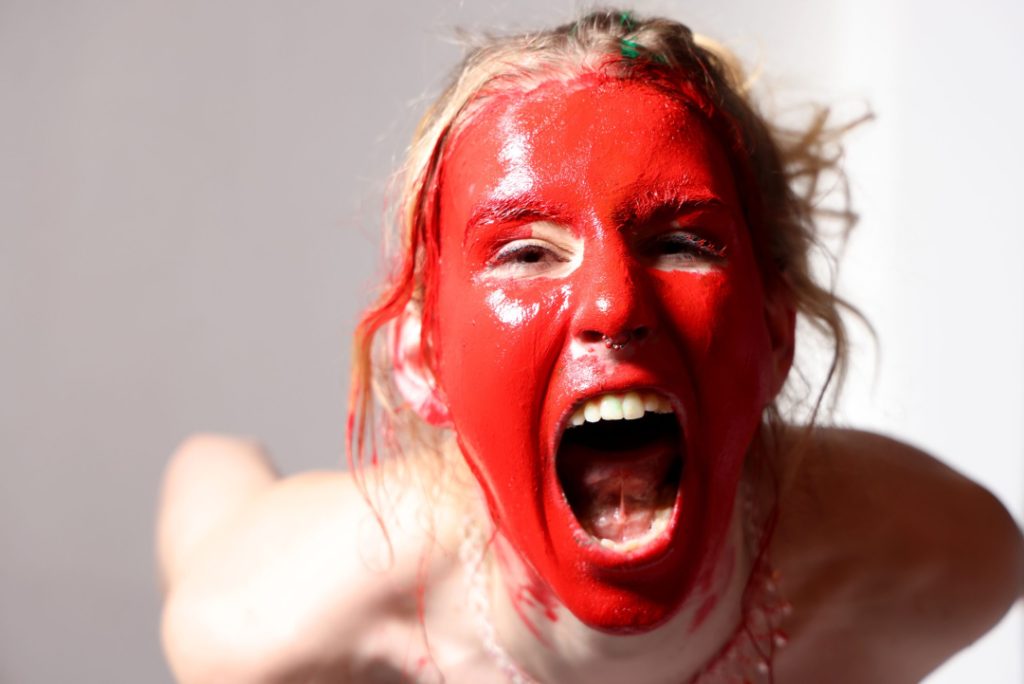
Carrying a Family’s Faith – and Choosing Her Own Path
For Emma, breaking away from her family’s faith was not an act of rejection, but of transformation.
”My family is Christian. They always will be, and I respect that,” she says. ”They believe in a God who watches over them, who guides their lives. I see it, I feel their faith, and I don’t deny that it gives them something beautiful. But for me, it doesn’t work.”
She sees religion as a treasure chest of wisdom, but not as a single truth. ”I believe that every faith has something to teach us. I want to listen, to understand, and to take what feels right without being bound by dogma. For me, faith is about creating a dialogue, not following a fixed path.”
Her view of faith has changed, but it is still present—in her art, in her body, in creation itself. ”For me, art is a form of prayer. It is an ongoing conversation with something greater than myself.”
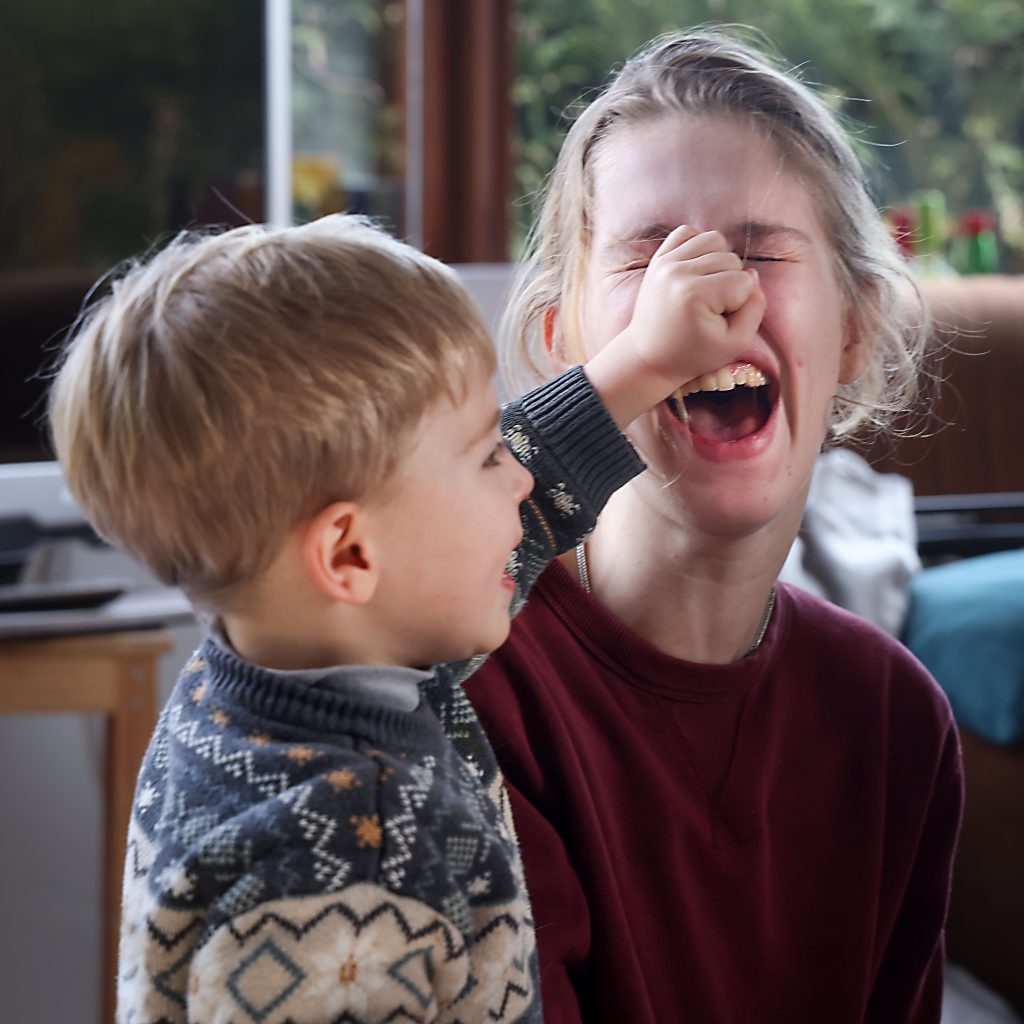
But what about her son?
”He will always be in touch with my side of the family, who are very Christian,” Emma says. ”He will hear and see how they live. But he won’t be shaped by it—he will be free to choose for himself. If one day he wants to be part of it, that’s his decision. I won’t stop him. Religion is beautiful, but I won’t force it onto him.”
Instead, she wants to show him the many spiritual paths that exist. ”I want to teach him that there are many religions, and that they all hold wisdom. That he should respect them, but also understand that no one faith has a monopoly on truth.”
Love Without Return
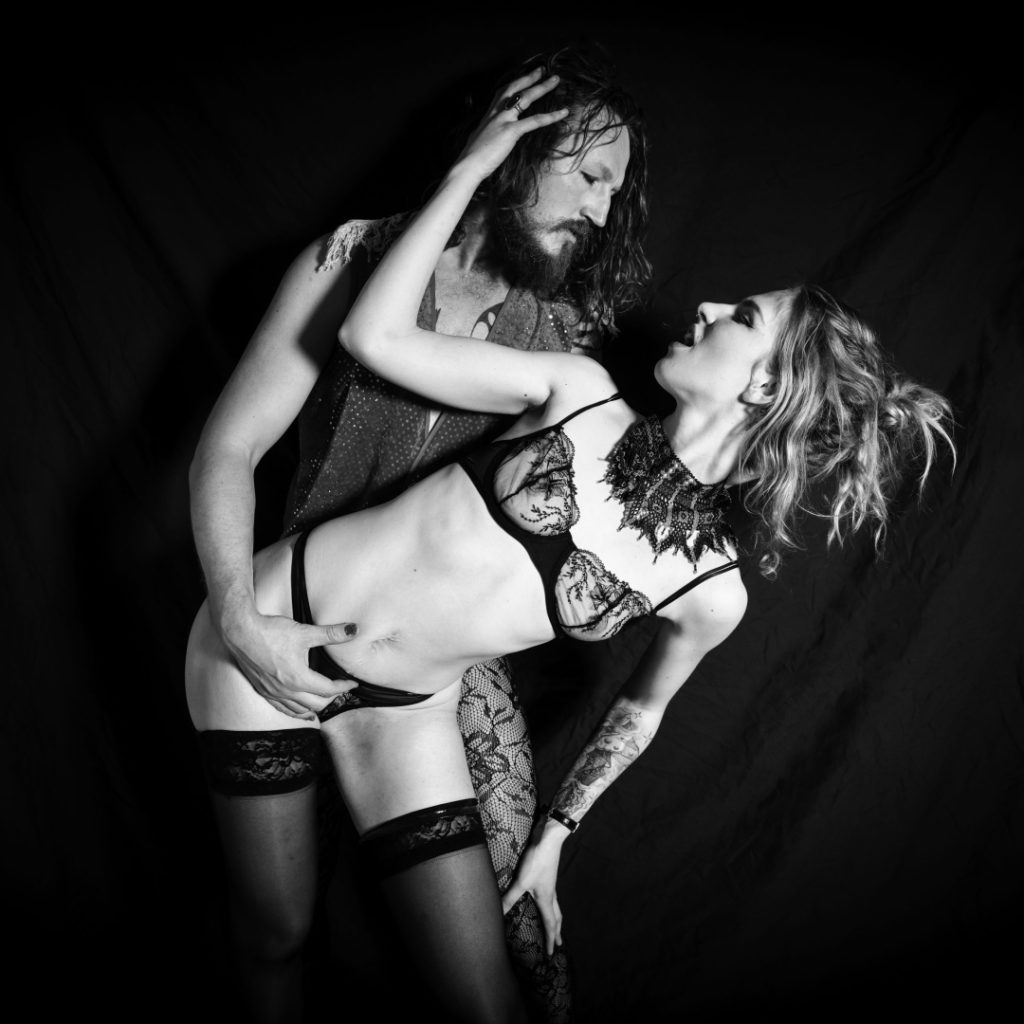
But there is another longing that Mathias cannot let go of. One that has nothing to do with God, yet still feels like a test.
He is in love with Emma.
She loves him, but not in the way he hopes. To her, he is a brother—someone to hold onto in the storm, but not to touch in the dark.
That tension is there in the images. He holds her in his arms, but she is already somewhere else. They are intimate, but never lovers. There is warmth, but also a boundary.
”I am the rebellion. I am love,” Mathias says. But what happens when the love he carries cannot be returned?
Perhaps that is what makes these images so powerful—that they hold so much that is never spoken out loud.
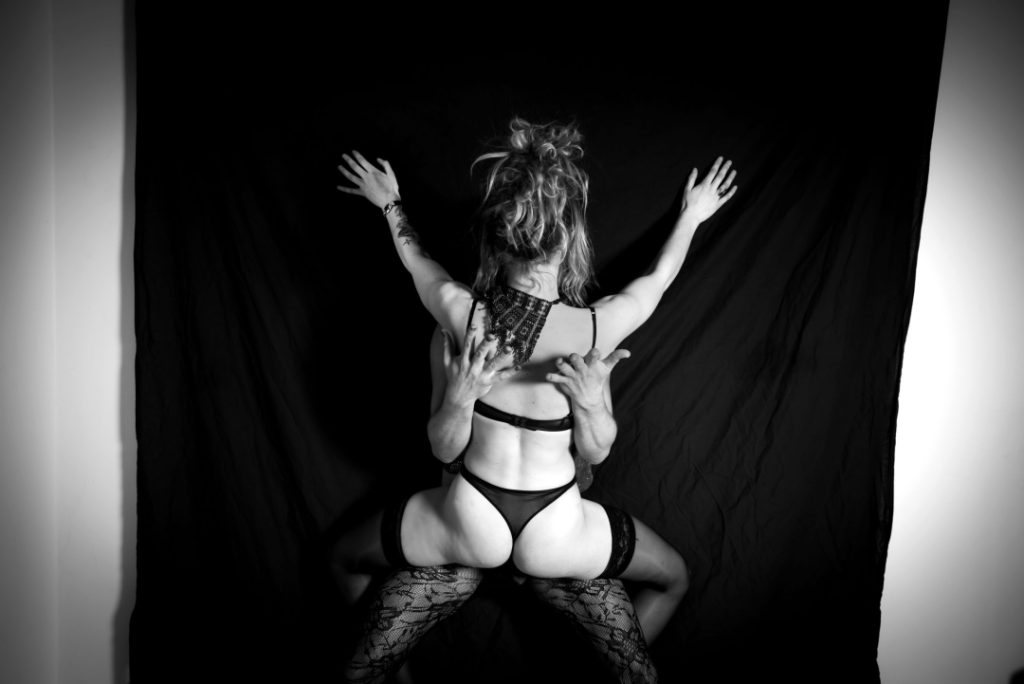
The End, or the Beginning?
This project is not just about leaving something behind. It is about creating something new. About letting the body take up space where it was once silenced. About turning away from shame and making every movement a celebration of life.
The body as a prayer, nudity as an act of freedom, each movement a new story.
And in this—a new generation. A daughter and a son who will choose their own paths. A man who shapes his own faith. A woman who paints her own temple on her own skin. A love that exists, but will never become more.
Faith can change. And maybe that is where freedom lies—in the space between what was and what is yet to come.
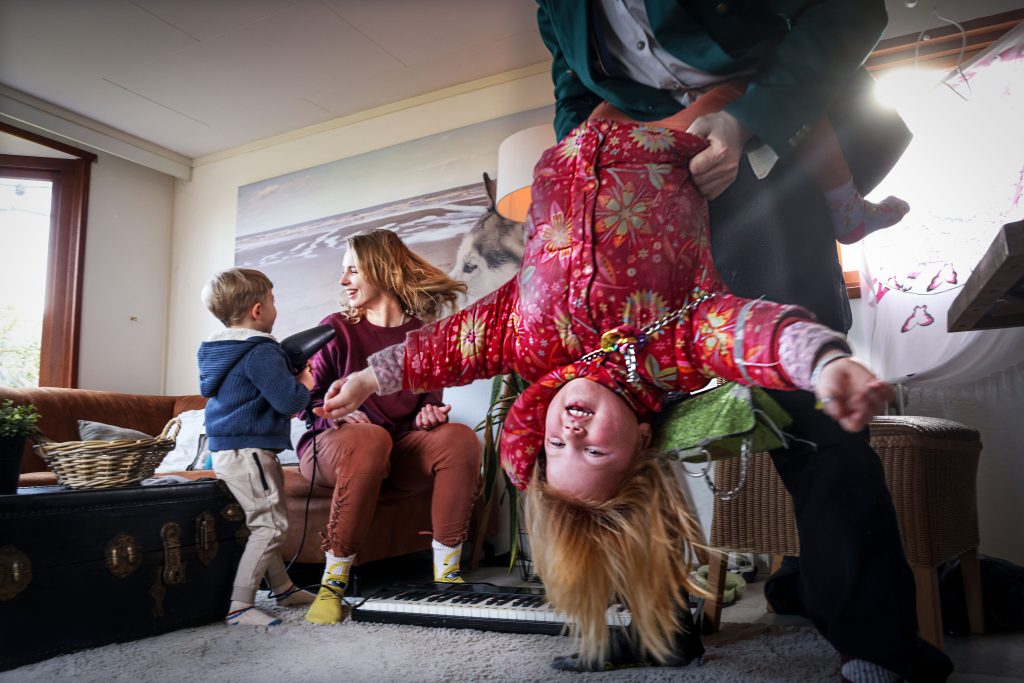
Dessa bilderna är magiska. Uppskattar verkligen ditt jobb här!
Keep up! 🙂
Tack för vänliga ord, en intressant vecka med många lager.